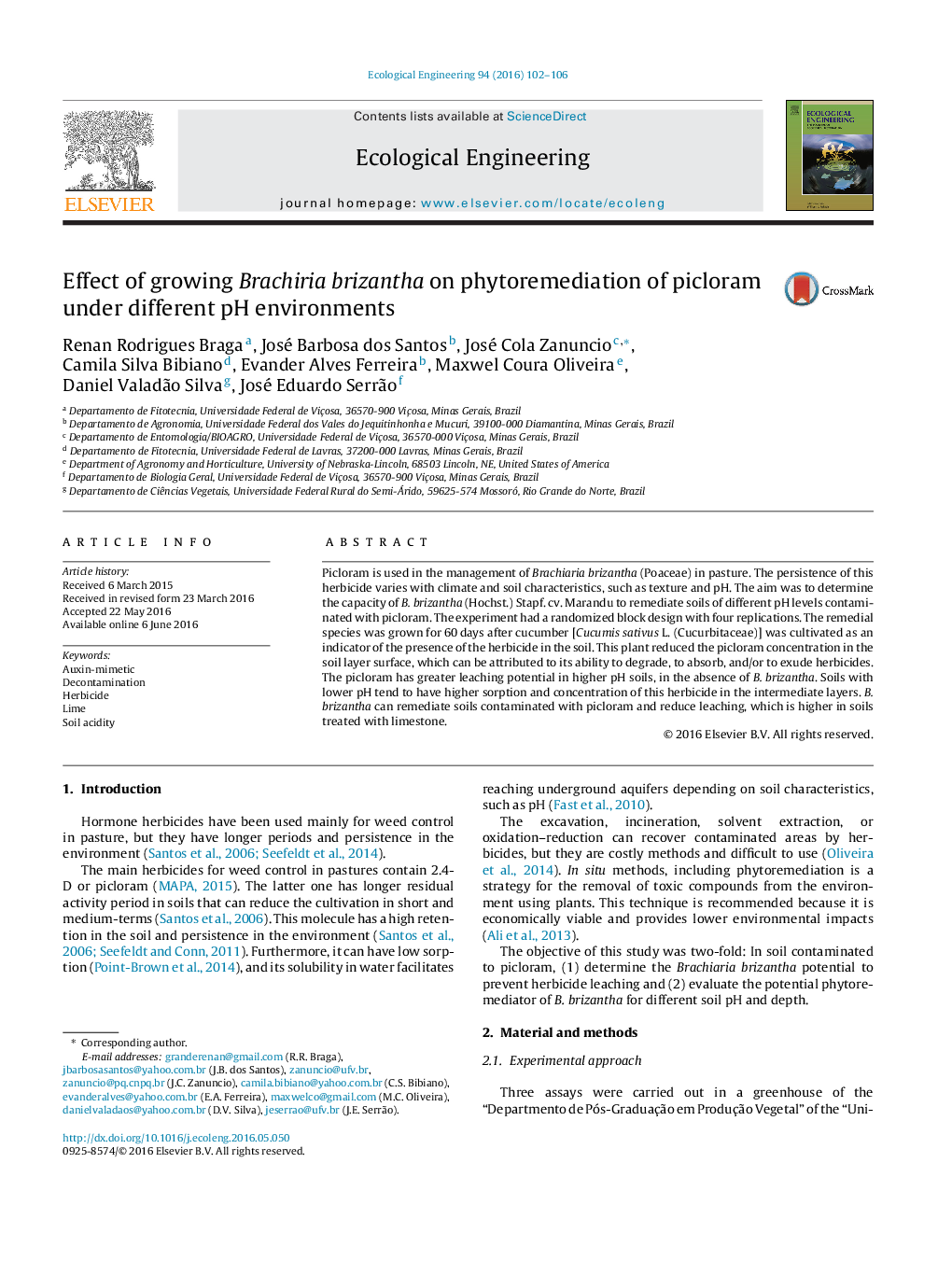| Article ID | Journal | Published Year | Pages | File Type |
|---|---|---|---|---|
| 4388537 | Ecological Engineering | 2016 | 5 Pages |
•Brachiaria brizantha can remediate soils contaminated with picloram.•The cultivation of Brachiaria brizantha reduces picloram leaching.•Soils with pH near neutrality tend to lose herbicide more rapidly by leaching.
Picloram is used in the management of Brachiaria brizantha (Poaceae) in pasture. The persistence of this herbicide varies with climate and soil characteristics, such as texture and pH. The aim was to determine the capacity of B. brizantha (Hochst.) Stapf. cv. Marandu to remediate soils of different pH levels contaminated with picloram. The experiment had a randomized block design with four replications. The remedial species was grown for 60 days after cucumber [Cucumis sativus L. (Cucurbitaceae)] was cultivated as an indicator of the presence of the herbicide in the soil. This plant reduced the picloram concentration in the soil layer surface, which can be attributed to its ability to degrade, to absorb, and/or to exude herbicides. The picloram has greater leaching potential in higher pH soils, in the absence of B. brizantha. Soils with lower pH tend to have higher sorption and concentration of this herbicide in the intermediate layers. B. brizantha can remediate soils contaminated with picloram and reduce leaching, which is higher in soils treated with limestone.
